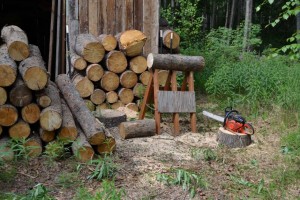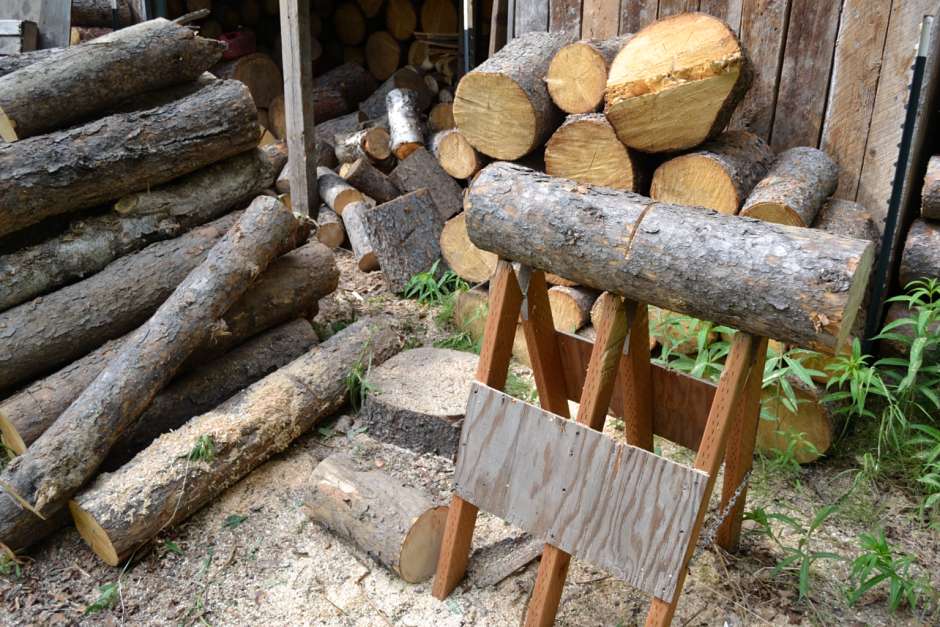Cutting firewood can be back-breaking work. And when you’re far out in the woods and your chain saw gives you trouble, you risk coming home with much less wood than you’d planned. After a couple of really sore-back days and one drive home with a very small load, I adopted a new plan: bring back four-foot logs when possible and cut them up into 16-inch firewood logs at home. Out in the woods, this technique drastically lowered both the amount of time spent bending down to cut and also the time the chain saw was running. It was mostly a big win. Except that it just spread out the back-breaking bending over (our wood stove insists on 16-inchers). We did like being able to get a load of wood faster, and I eventually figured out a method at home that’s pretty easy on my back.
A typical sawbuck is not very good with a chainsaw, because you need decent airspace below for when the blade cuts through. Also, sawbucks are usually not very mobile, and I wanted to be able to move the sawbuck to the woodpiles rather than the other way around. The simple solution has worked well now for quite a few years. It’s perfect for my height and our four-foot logs, and it folds up to be carried to the next pile or to be put away in the shed. It’s built for making just two cuts on a four-foot log. I carry a small 16-inch stick (a thick dowel) in my pliers pocket to measure my cuts. I am not sure why, but despite the bending over that is needed to hoist the four-foot logs onto this sawbuck, bending over to set down and pick up the chain saw, and then bending yet again to toss the firewood onto the short-log pile, my back loves this setup. Maybe it’s because I don’t have to hold a bent position for longer periods of time. And it sure is nice to cut while standing straight up.
How to build it: Make three paired legs by hinging two 2x4s on edge; the top ends are angled at 45 degrees, and for me the short sides are 32 inches tall. For 16-inch firewood, space these three supports at (left edge) 0″, 10.75″, and 21.5″. I anchored the supports together on each side by screwing a piece of plywood down far enough below the center of action that I’ve rarely nipped it with the saw. A couple of small chains keep it open the right amount when in service, and the raw, straight-cut feet tend to keep it in place on dirt, grass, or snow. Mindful that they are there, I have not yet hit one of the hinges with the saw.


